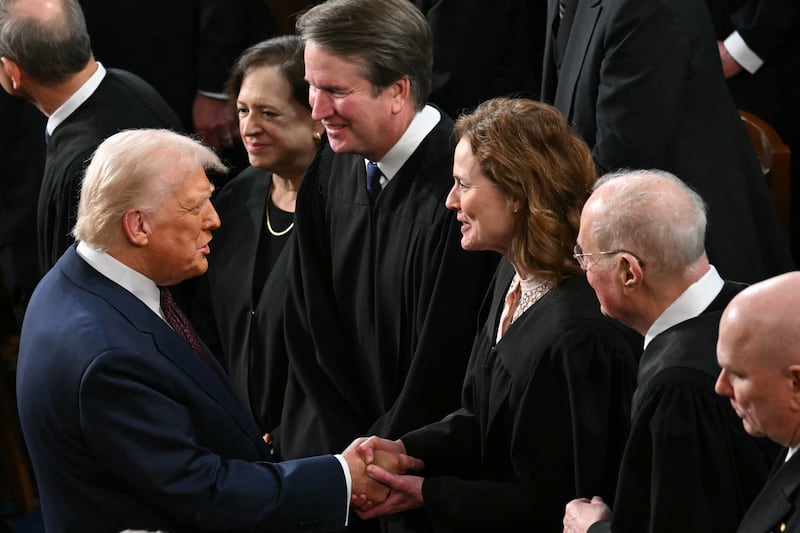President Donald Trump is going head to head with federal justices in his next push to overturn a near century-long Supreme Court precedent.
If the precedent is overturned, the president will have the power to fire independent agency leaders without giving a reason.
It’s exactly what he’s done to seven leaders so far, all because he disagrees with their views. Judges have momentarily blocked their firings, but it’s unclear if their rulings will stick if the cases make their way to the conservative-majority Supreme Court.

On Monday a federal appeals court struck down Trump’s random expulsions of two high-profile agency leaders—Cathy Harris and Gwynne Wilcox—setting the stage for the divisive Supreme Court battle as the president plots his next move.
In a 7-4 vote, the court deemed Trump’s sacking of Harris and Wilcox as unlawful. Harris was a member of the Merit Systems Protection Board and Wilcox was the first Black member of the National Labor Relations Board. The duo were laid off without any explanation earlier this year, but will now resume their posts—at least until Trump makes his next move.
“The President’s action against Ms. Wilcox is part of a string of openly illegal firings in the early days of the second Trump administration that are apparently designed to test Congress’s power to create independent agencies like the Board,” said Wilcox’s attorney Deepak Gupta.
The Trump administration did not tell Harris and Wilcox why they were fired. Harris’ role was largely to protect whistleblowers. Wilcox supported federal labor law. In March a court greenlit Trump’s ambush before the appeals court countered the ruling.
The judicial face-off could set the stage for the Supreme Court to reconsider the precedent case of Humphrey’s Executor v. United States, which curbs a president’s power to fire independent agency board members. If the precedent is upended, Trump can further expand his executive power.
For years Congress has protected officials from unexplained terminations under the 1935 court case, where President Franklin D. Roosevelt tried to fire Federal Trade Commission member William Humphrey for not supporting his New Deal. The court ruled in Humphrey’s favor, making it illegal to fire independent agency members without cause. Now, as Trump dismisses several Democratic appointees and exerts unprecedented executive power over certain agencies, many legal experts worry that Humphrey’s Executor is on the chopping block.
The Supreme Court likely has Trump’s back. There’s currently a conservative majority, with six of the Supreme Court’s nine justices appointed by Republican presidents. In 2020 five sided with the Trump administration on a similar case.
Justices Clarence Thomas and Neil Gorsuch explicitly called for it to be overturned then and prayed that the court might have “the will to do so” in the future. Thomas even called it a “direct threat to our constitutional structure.”
The courts’ flip-flopping judgements are indicative of a national turning point. Trump has recently sought to overhaul federal agencies and exert unprecedented executive power by dismissing several leaders, including two Democrats on the Equal Employment Opportunity Commission, which oversees workplace discrimination; a Democratic member of the Federal Labor Relations Authority, which deals with federal labor union disputes; and the Democratic Head of the Office of Special Counsel, which also protects federal workers from illegal personnel actions.
While Wilcox and Harris are now heading back to the office, their ability to work is only temporary. The case is headed back to a three-judge D.C. Circuit panel to make a final ruling. But the president could file an emergency appeal at the Supreme Court instead, prompting a historic battle that might forever upend the longstanding precedent.






